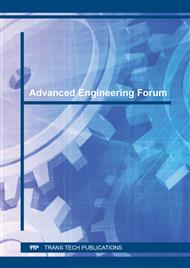p.1
p.12
p.24
p.40
p.48
p.55
p.63
p.76
Dissimilar and Similar Laser Beam and GTA Welding of Nuclear Fuel Pin Cladding Tube to End Plug Joint
Abstract:
The end plug to cladding tube of fast reactor fuel pin is normally welded using Gas Tungsten Arc Welding (GTAW) process. The GTAW process has large heat input and wide heat-affected-zone (HAZ) than high energy density process such as laser welding. In the present study Laser Beam Welding (LBW) is being considered as an alternative welding process to join end plug to clad tube. The characteristics of autogenous processes such as GTAW and pulsed Nd-YAG laser welding on fuel cladding tube to end plug joints have been investigated in this study. Dissimilar combinations of modified stainless steel (SS) alloy D9 cladding tube to SS316L end plug, and similar combinations of SS316L cladding tube to SS316L end plug were successfully welded using the above two welding processes. The laser welding was performed at the butting surfaces of the cladding tube and the end plug, and also by shifting the laser beam by 0.2 mm towards the end plug side to compensate the heat balance and for improving the Creq/Nieq ratio in the molten pool. Helium Leak Test (HLT) and Radiography Test (RT) were carried out to validate the quality of the welds. The microstructures of the weld joints were analysed using optical microscope. In the present study, it has been demonstrated that it is possible to obtain welds free from hot cracks by shifting the laser beam by 0.2 mm towards end plug side, while the weld produced using the beam positioned at the interface shows cracks in the weld.
Info:
Periodical:
Pages:
40-47
Citation:
Online since:
October 2017
Keywords:
Price:
Сopyright:
© 2017 Trans Tech Publications Ltd. All Rights Reserved
Share:
Citation:


